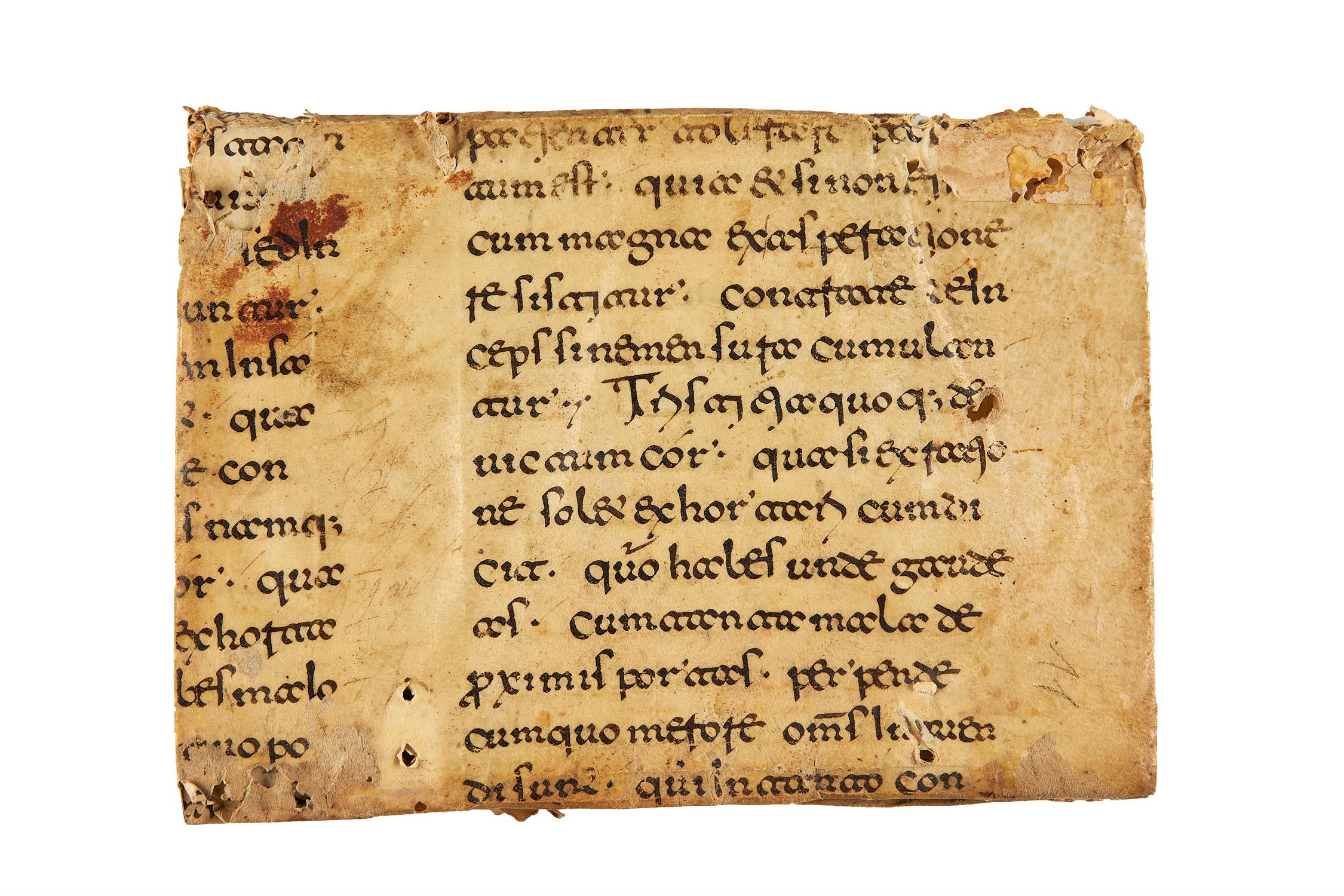GREGORY THE GREAT (590-604), a leaf from the Homilia in Evangelia , in Latin, decorated manuscript on vellum [central Italy, first half 12th century] A handsome leaf with a charming historiated initial from what would have been a gargantuan copy of St Gregory's influential homilies on the Gospels. 565 x 387mm. The text beginning in Homily XXXVII, '[Quorum bene Petrus adhuc in in]firmitate positus speciem tenet', a homily on Matthew, and ending in Homily XXXVIII, 'nisi etiam quisque studeat', a homily on Luke. Blind-ruled for 2 columns of 52 lines, ruled space: 480 x 235mm, historiated initial 'S' with a figure in a pale blue dress, early foliation 'Clxxiiii' (recovered from use as a book-cover and thus with typical damage including folds and creases, staining especially to lower margin of verso, affecting a few lines of text, a few holes and wormholes, early repair in outer margin). Provenance : Dismembered probably in the mid-16th century for use as scrap vellum, various inscriptions including the date 1564, and calculations in the margins, perhaps indicating reuse as an account book. The monochrome figure with the initial 'S', with its formulaic posture, modelling and dress with simple folds executed in a blue wash is reminiscent of the style of central Italian artists working on the Giant Atlantic Bibles, or Bibbie Atlantiche , so prevalent in the 11th and 12th centuries.
GREGORY THE GREAT (590-604), a leaf from the Homilia in Evangelia , in Latin, decorated manuscript on vellum [central Italy, first half 12th century] A handsome leaf with a charming historiated initial from what would have been a gargantuan copy of St Gregory's influential homilies on the Gospels. 565 x 387mm. The text beginning in Homily XXXVII, '[Quorum bene Petrus adhuc in in]firmitate positus speciem tenet', a homily on Matthew, and ending in Homily XXXVIII, 'nisi etiam quisque studeat', a homily on Luke. Blind-ruled for 2 columns of 52 lines, ruled space: 480 x 235mm, historiated initial 'S' with a figure in a pale blue dress, early foliation 'Clxxiiii' (recovered from use as a book-cover and thus with typical damage including folds and creases, staining especially to lower margin of verso, affecting a few lines of text, a few holes and wormholes, early repair in outer margin). Provenance : Dismembered probably in the mid-16th century for use as scrap vellum, various inscriptions including the date 1564, and calculations in the margins, perhaps indicating reuse as an account book. The monochrome figure with the initial 'S', with its formulaic posture, modelling and dress with simple folds executed in a blue wash is reminiscent of the style of central Italian artists working on the Giant Atlantic Bibles, or Bibbie Atlantiche , so prevalent in the 11th and 12th centuries.

.jpg)



.jpg)

.jpg)
.jpg)


.jpg)


Try LotSearch and its premium features for 7 days - without any costs!
Be notified automatically about new items in upcoming auctions.
Create an alert